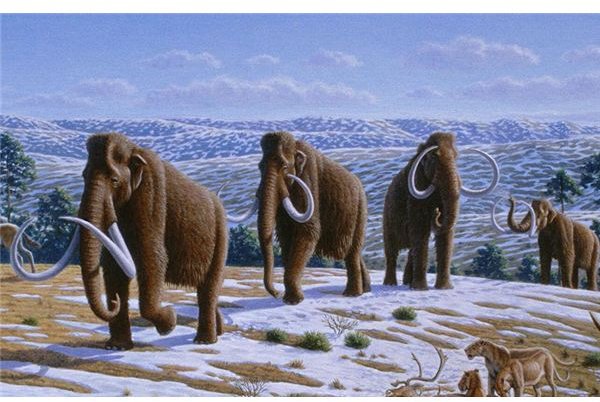Sequencing the Woolly Mammoth Genome: What we Can Learn From Extinct Animal's Genes
Roughly 12,000 years ago a woolly mammoth took its last gasp of air and was no more. The end of an era, the end of a species, its time had run out. Luckily for science these ice age beasts just happened to live and die in an arctic environment that kept their remains in pretty good condition.
Woolly Mammoth Genome Sequenced
Nearly 80% of the woolly mammoth genome has now been sequenced from hair samples that were bought over the internet by scientists from Pennsylvania State University. The advantage of extracting DNA from hair samples as opposed to bone fragments is that it is far less likely to be contaminated with DNA from bacteria or fungi. The hair from two specimens was used in this research and an incredible 3.3 billion bases were sequenced. According to the journal Nature, where this research was published, that makes it the first time that the nearly complete genome of an extinct animal has been sequenced.
Research
Research of this nature has two groups of people leaping for joy. One wants to know more about evolutionary history and whether ancient DNA can provide genuine insights into why a species died out. The other group dreams of cloning dead animals to bring extinct species back to life, such as the case with the Frozen Ark Project.
Before we dive into the realms of science fiction the woolly mammoth genome is already providing scientists with some answers. The research confirms earlier studies that there were two species of mammoths in Siberia. It also puts an approximate date of the split of these two populations to about 1.5 million years ago. The research also showed that the mammoths are very closely related to the African elephant with a difference in their genomes of only 0.6%. The mammoth genome is also huge; scientists reckon it’s about 1.4 times larger than the human genome.
Scientists involved in this study also noted mutations in several regions of the genome. In other mammals these areas are highly conserved and researchers reckon it could be these genetic faults that allowed the beasts to survive the harsh, icy conditions of Siberia.
Cloning Dead Animals
Even though much of the woolly mammoth genome has been sequenced it will still be some time before a scientist successfully attempts to clone an extinct animal. Scientists have successfully made clones from frozen specimens of dead mice, but further than that, there are complications.
First of all a coherent enough sequence is needed without the incredible volume of mutations that you find in ancient DNA. Even though copious amounts of DNA were extracted from the woolly mammoth hair samples, time was not a great friend as there was much degradation. Plus the scientists would need to decipher what is a real mutation and what is degradation. Some of the mutations may have conferred benefits on the mammoth and it seems a virtually impossible task to sort one from the other over such a large scale.
To successfully clone a mammoth scientists would also need to know how many chromosomes were packed into its cells; this is currently unknown.
This doesn’t necessarily mean that it’s the end of the story, extinction may still become a thing of the past, but the science is not there yet. To create a cloned mammoth requires rebuilding a cell nucleus or the even more fantastic idea of getting hold of an African elephant cell and making hundreds of thousands of mutations, such that it turns into a mammoth cell.
It may be some time before the Earth once again plays host to the pitter patter of baby mammoth feet.
Source
Nature: https://www.nature.com/nature/index.html
Image: https://commons.wikimedia.org/wiki/File:Woolly_mammoth_cropped.jpg
